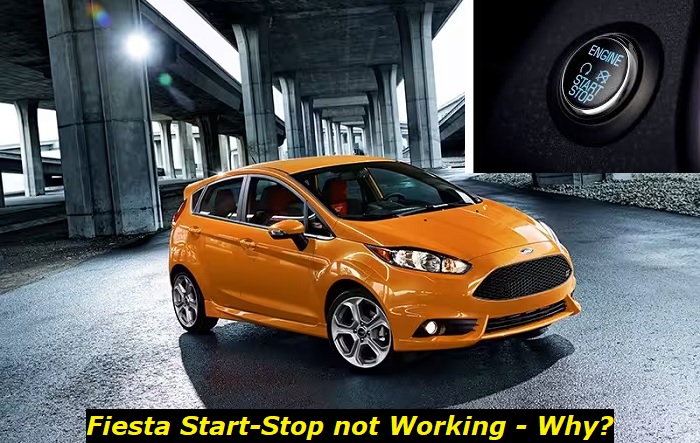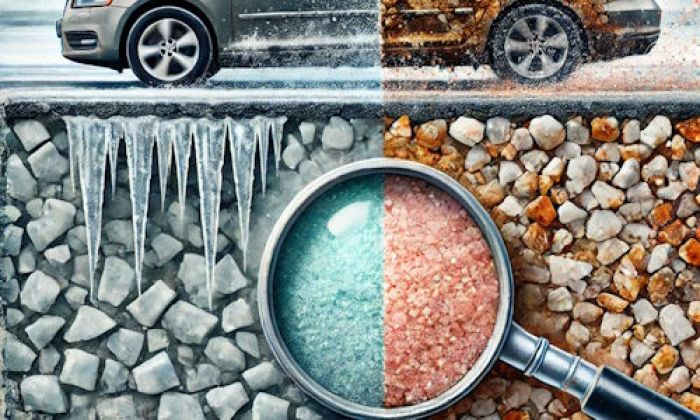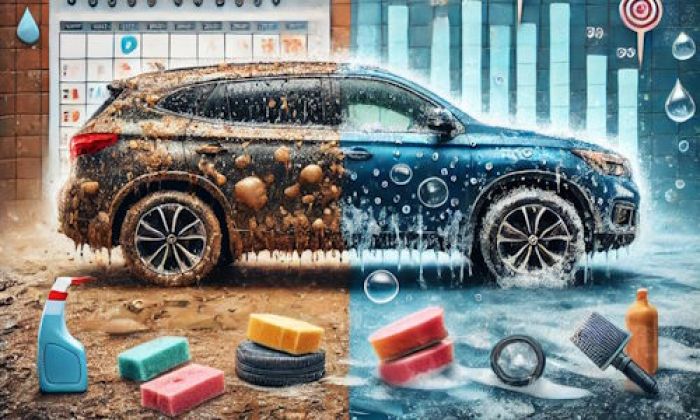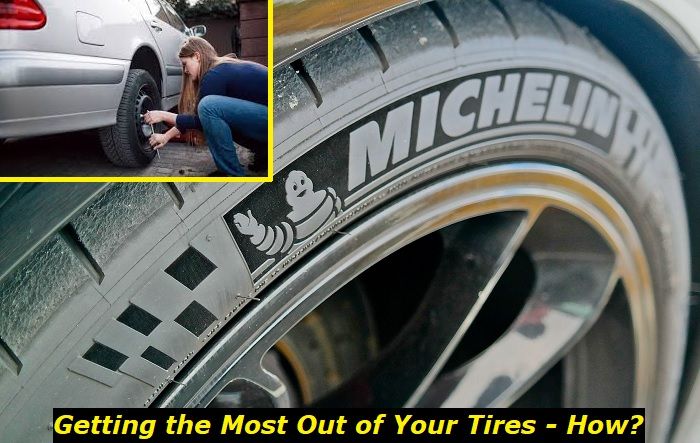Any Ford Fiesta owner would find it odd to have the Auto Start-Stop feature not engaging. See, this feature is the main selling point of the unit as a hybrid engine. And to see it not activating when it needs to defeats its purpose as a fuel-saving feature and as an economically friendly vehicle.
But when your dash does not illuminate green on the Auto Start-Stop icon when you go idle, this does not mean the feature is not working. The system only needs to disable the feature in some cases.

What is the Auto Start-Stop Feature in Ford Vehicles?
Before we enumerate the reasons why the Ford Fiesta Auto Start-stop feature, let us discuss how this feature works.
The Auto Start-Stop is a feature that automatically stops the engine when the vehicle is idling. It works by shutting off the engine when you apply the brakes. It should restart as soon as you release the pedal.
This technology aims to improve fuel economy and reduce emissions. According to the study made by the Society of Automotive Engineers, the Auto-Start-Stop features can improve fuel economy by eight percent.
Reasons Ford Fiesta Start/stop doesn't work
1) Battery Issues
Ford Auto-start-stop feature requires a special battery that turns the engine on and off frequently and on time. You cannot find this ability on regular batteries. This feature needs a significant amount of electrical supply to sustain its operation. Going beyond its required battery charge will cause it to deactivate. However, its deactivation is temporary unless the battery you have charged your battery to full load.
Also, Ford vehicles utilize a Battery Management System (BMS) that may affect the performance of the start-stop feature. The system may go into Battery-Saving Mode when the battery charge is low. On a battery-saving mode, the auto start-stop will disable temporarily as the battery cannot support its operation.
The only way to stop this problem is to charge the battery. You must drive the car engine for about thirty to forty minutes to recharge it to full load.
2) Bad alternator
The alternator keeps the battery charged to supply energy and operate the stop-start feature. However, a problem is on or a faulty alternator will affect its performance or may not work at all. Many reasons could cause issues with the alternator:
- Worn-out bushes
- Bad voltage regulator
- Broken or loose alternator belt
- Loose wirings
The only way to fix this is to replace the component. And you'll need a professional to diagnose the issue.
3) Battery Connection Problems
Poor battery connection is one of the common causes why electrical components fail to work. Loose, damaged, or corroded battery connections will prevent the battery from delivering power supply to operate the start-stop feature. The Auto start-stop feature demands high energy because it needs to switch the engine on and off quickly.
A loose or corroded battery connection will drain the battery quickly or reduce the power supplied. Poor and dirty battery connections and corroded terminals may damage components or send false signals to the computer.
You can fix this issue by cleaning corrosion or dirt and tightening clamps and wire connections.
4) Faulty Starter Motor
A faulty starter motor will cause restarting issues on the start-stop feature. This motor activates the flywheel, so it can turn at conditions of restarting the engine. However, the starter motor can suffer from different problems.
It may suffer from electrical issues, mechanical wear and tear, overheating, and contamination.
You will need a certified mechanic to confirm the diagnosis. And once found the problem is in a faulty starter motor, you need to replace it.
Conditions When the Auto Start-Stop Feature May Not Work
Sometimes, there are no problems with the auto-start feature. However, some conditions prevent it from activating.
1) Low Temperature
Like any other vehicle, your Ford Fiesta will require more power to operate during the cold weather. In these times, the engine works harder to generate the same amount of energy when the weather is warm. For this reason, your hybrid vehicle needs more time to warm up when cold.
Also, the oil becomes thicker, affecting its flow when the engine is on.
For this reason, you need to warm up the engine for thirty to forty minutes until your vehicle reaches the ideal temperature to operate.
2) Maintaining interior climate
The Auto Start-stop feature automatically disables when the climate control system tries to maintain a temperature inside the cabin. The climate control system increases demand when it tries to maintain a temperature.
You can try turning the climate control system off before stopping or idling. Turn it on when the engine has restarted.
3) Doors are open
An open door is an indicator of safety issues. When the system concludes that the door is still open, the system interprets that the vehicle has not come to a full stop. For the start-stop feature to work, the system must detect that the engine has stopped completely and the driver's foot presses the brake pedal.
A completely shut door means the driver or passenger has exited the vehicle or seated back safely.
4) Low brake system vacuum
The brake pedal relies on the brake pedal on the system vacuum to bring it to a full stop. But with a low brake system vacuum, the pedal may feel spongy. The low pressure may affect how the start-stop feature responds to the brake. It may not detect the vehicle has come to a full stop.
There are many causes why the brake vacuum is low. To diagnose the problem, check the following:
- Brake booster vacuum hose
- Vacuum check valve
- Engine vacuum
- Vacuum leaks
Your fix depends on the underlying cause. We advise bringing your vehicle to your trusted mechanic for accurate diagnosis.
5) Speed did not exceed 5km/h
The Auto start-stop engine will not shut the engine if it hasn't reached a speed of 5 km per hour or according to specifications. Going beyond this speed will keep the feature inactive unless it goes below this threshold.
The sensors send this measurement to the computer to decide if the vehicle has gone to a complete stop. If you tried to stop the vehicle, but the start-stop feature did not activate, the event did not meet other conditions required by the system. It only shuts the engine off when it detects the vehicle has stopped completely, the transmission is in neutral, the foot is on the brake pedal, and the clutch is depressed.
If the prompt met these conditions, but the feature did not activate, a problem exists with the sensors, or something disrupted the communication. Bring your vehicle to your mechanic to diagnose it properly.
6) Unfastened driver seatbelt
For automatic units, the start-stop feature will remain inactive unless you have fastened your seatbelt. This safety feature ensures that the driver and passengers have seated properly when the vehicle is moving. After being stationary and the engine has shut off, the engine should restart after releasing the brake pedal. But since a passenger hasn't buckled onto their seat, the system will not restart and remain inactive, even after releasing the brake pedal.
If you have fastened your seatbelt and met other conditions, but the vehicle did not start, your sensors may have a problem. These sensors include a brake pedal position sensor, clutch position sensor (for manual), or seatbelt sensor.
7) Fiesta is at a high altitude
The air density reduces when the vehicle is at a high altitude. The system relies on the ability of the engine to restart as soon as you release the brake pedal. But at a high altitude, the battery needs to work hard, and the system may require more energy. This incident will drain your battery faster and cause your start-stop feature to deactivate.
8) The heated windshield is on
The heated windshield requires an additional electrical load to operate. When both systems, the heated windshield, and the start-stop features are activated, the alternator has to work harder, so it can also supply power to other components or systems. When the computer concludes there is a low voltage to operate, the auto start-stop feature will deactivate. The battery cannot sustain an additional load.
9) You're on manual (M) or sports (S) transmission
For the automatic Ford Fiesta, the optimal gear to switch on and off quickly when your vehicle is in automatic mode. In manual or sports transmission, the driver has more control. It will require more power to switch on and off quickly. For this reason, Ford designed the vehicle to operate the start-stop feature only on its optimal gear. Keep it in automatic mode to maximize the potential of the start-stop feature.
10) The steering angle measures more than 90°.
Making sharp turns, such as the 90° angle, indicates that the driver has more control over the vehicle. With this control, it would be hard for the system to restart quickly, and doing so will become dangerous. The sudden change in the vehicle's momentum makes stopping and restarting on time impractical. Our advice is to keep your vehicle in automatic mode.
Final Thoughts
The Ford Fiesta Auto Start-Stop is a high-end feature that is so helpful in saving fuel and reducing carbon emissions. However, the system is so sensitive that certain conditions may make it appear that the system is not working. But the truth is, it is working to deactivate the feature to keep the driver and passengers safe.
The most common problems are related to battery issues. You need at least 75% of the battery charge to keep it running.
When you suspect this feature is not running properly, visit your qualified mechanic for scanning and accurate diagnosis.
About the authors
The CarAraC research team is composed of seasoned auto mechanics and automotive industry professionals, including individuals with advanced degrees and certifications in their field. Our team members boast prestigious credentials, reflecting their extensive knowledge and skills. These qualifications include: IMI: Institute of the Motor Industry, ASE-Certified Master Automobile Technicians; Coventry University, Graduate of MA in Automotive Journalism; Politecnico di Torino, Italy, MS Automotive Engineering; Ss. Cyril and Methodius University in Skopje, Mechanical University in Skopje; TOC Automotive College; DHA Suffa University, Department of Mechanical Engineering






Add comment